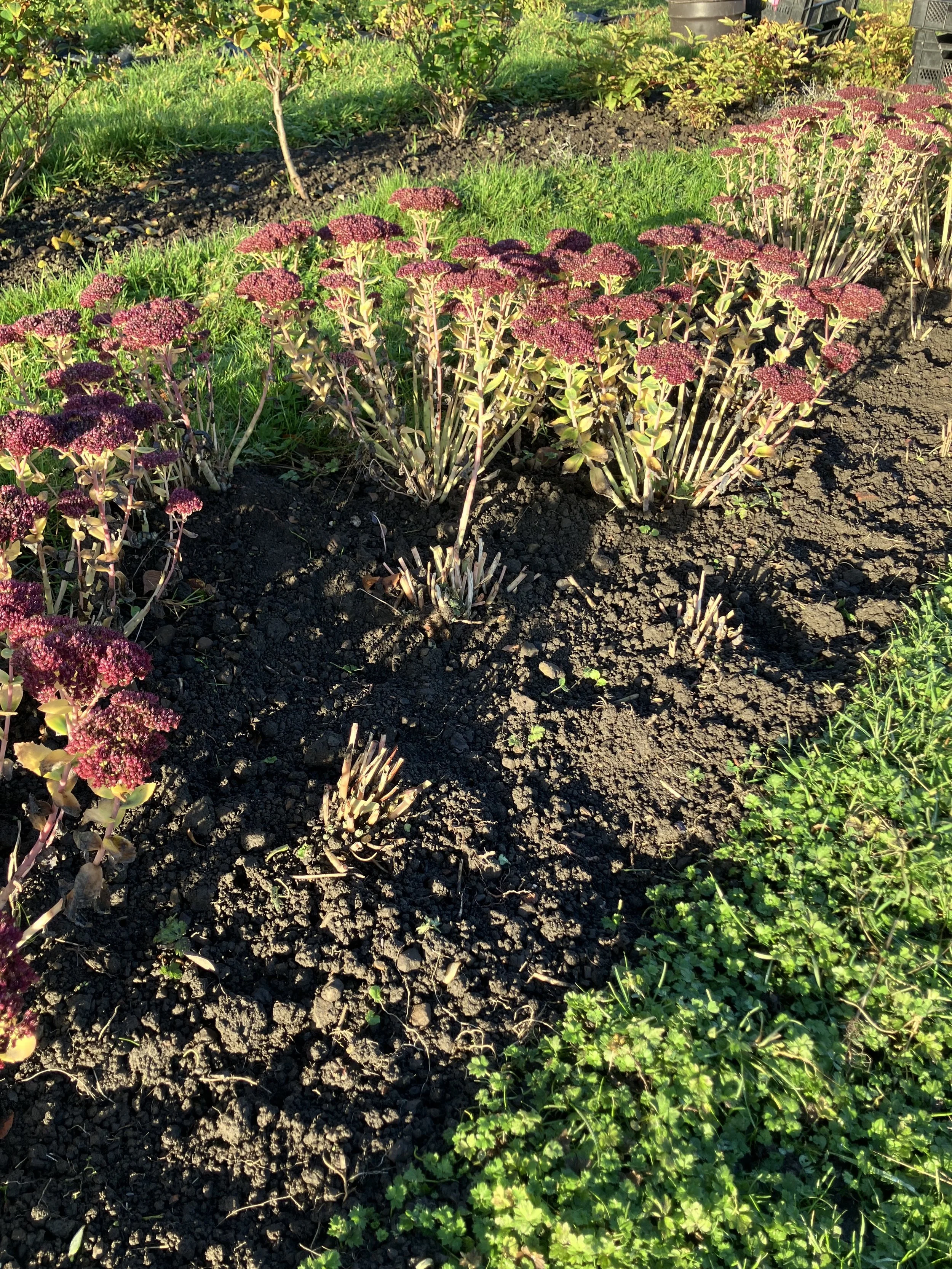Autumn at Our Wortley Hall Walled Garden 🍂
Tucked behind the historic grandeur of Wortley Hall, Bloom Sheffield’s section of the walled garden has been quietly flourishing under the care of our dedicated team of 10 volunteers. As the leaves turn and the air cools, the garden is settling into its winter rest—ready to rise again with fresh energy in the year ahead. Our Head Gardener, Kate, tells us about what has been happening in the garden this season to help keep it growing.
Since taking on our part of the Walled Garden, our team of Volunteers have worked hard to fill all 14, 32m long beds. We grow a mixture of Shrubs for foliage, Roses, Herbaceous perennials, Bulbs, Dahlias and Biennials.
This year has been challenging in some ways, due to the lack of rainfall, however a very dry spring did help to keep the slug population down. Our Dahlias got a good start in May and were still flowering into the first week of November!
Autumn is a very busy time in the garden. We have moved some shrubs to make way for some more bare root roses, so we will have two full beds full of cutting roses ready for our 2026 weddings. We have also lifted and divided our Sedum plants. We decided to widen the sedum bed and make more plants for free by division.
This year, we planted some Verbena Bonariensis and Bronze Fennel. Both these varieties love the sun, which is great as this garden benefits from full sun all day long. We have deliberately left the seed heads on, to encourage them to self seed around. Again, more plants for free we hope.
When the herbaceous perennials have finished flowering we ‘Chop and Drop’ - this invloves cutting back the old flowering stems and leaving them to rot down on the beds. This method has many beneficial factors; it saves on time and energy, moving the stems to the compost heap and it also adds a layer of mulch and a bit of added protection to the plants below. All the insects can over winter inside the stems. We use this method for crops such as Achilliea and Rudbeckia.
In July we sowed some Feverfew seeds. Feverfew are great little perennial that we use as a filler flower in our shop bouquets. They did really well and have bulked up into great sized plug plants. Before the weather gets too cold, we planted them out into their new home. We all love Feverfew, so we can’t wait to harvest from here next year.
Autumn is also the time of year to protect Dahlias. Dahlias do not tolerate frost. There are many different schools of thought when it comes to how to over-winter Dahlias. It depends a lot on what the site is like and the soil type you have. We grow Dahlias at 3 of our 4 gardens. Each site is very different. Here at Wortley we have free draining soil and we plant a large number of plants each year.
We had a lovely group of volunteers and attendees at the garden last week to help us with this mammoth task.
Digging them up and storing them in a frost free building is very time consuming and we only have a limited space to store them. With this in mind, we have dug up our favorite varieties to make sure they survive the winter. We leave the rest of them in the ground and take the risk that they may not come back next year.
To give them the best protection, we mulch them with compost and put a large plastic plant pot over the top to protect them from the worst of the wet weather. Dahlias hate being sat in cold, wet soil.
It’s important to remember to label your favourites when using this method, as it's easy to forget which ones are which when they stop flowering. We use a coloured ribbon around the bottom of the stems.
Although it's very labour intensive, there are some good advantages in lifting the dahlias. It gives you the opportunity to divide your favourites and make more plants for free. It also helps you to spot any disease.







